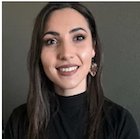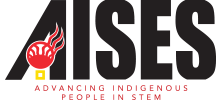With roughly 6,000 colleges in the United States, choosing the right one can seem like an overwhelming task. Factors such as programs, academic rigor, size, location, and available resources need to be considered by a prospective student and their family. While visiting college websites is important, there’s nothing like a campus visit to help get good feel for a school and what it’s like to be a student there. Here are some tips for a productive campus visit.
Do Some Research
Before visiting a college, read up about available programs, student demographics, and campus culture. This will give you a general understanding of the school. It’s OK if you haven’t settled on a major — just try to get a sense for the school’s focus and how it operates. Is there a focus on science and research? Do they require internships? Where do the majority of students come from and what percentage lives on campus. These basic facts will help you hone in on various aspects of campus life during your tour.
Prepare Questions
While doing your pre-visit research, keep a list of questions you have. It can be daunting to ask questions while on a large group tour, but chances are others are wondering the same things. If you can’t must the courage in the larger setting, don’t be afraid to ask your tour guide some questions when the tour concludes. Student guides are trained to answer most questions directly, and if they don’t have the answer they’ll know where to find it. Don’t squander the opportunity to address your questions in person.
Dig Deep
Your time in the classroom is important, but it’s not all that college is about. You might want to consider what support systems are in place, especially for Native students. While you’re on campus, inquire about academic assistance, clubs, organizations, and other ways to students get involved. Ask if the school has an AISES College Chapter that supports Indigenous students academically, socially, and culturally. You can always check the Chapter Directory to find contact information for the chapter advisor and officers before your visit and try to coordinate a meeting while you’re on campus. Or keep the names handy in case you want to reach out to learn more about Native-specific resources and scholarship opportunities — or other aspects about the school.
Make Connections
During your campus visit, collect contact information for an admissions counselor and tour guide so that you can connect with them should questions pop up after you leave. Having a few points of contact provides an easy way to continue conversations about certain academic, athletic, or extracurricular programs as well as campus culture. By staying in touch, you’ll show the school you’re interested, and you’ll receive personal responses and assessments from people in the know.
Compare Notes with Your Parents
Before visiting schools, talk with your parents or guardians and determine the expectations you all have for each visit. You might not all be on the same page with regard to each school, but remember these are just exploratory tours — no decisions need to be made that day. It works best when everyone keeps an open mind while you’re on campus. Later, share with each other what you learned, liked, and disliked during your visit.
Picking the right college can be stressful, but there are resources to help you along the way. Check out the list of Top 200 Colleges for Indigenous Students in the Special College Issue of Winds of Change for more information on colleges that offer programing for Native students. Wherever you visit, make the most of your time on campus by arriving prepared, asking questions, and keeping an open mind. In the end, you’ll be most successful at a school where you feel at home and supported. Be honest with yourself and express your thoughts and concerns with those guiding you throughout the process.

The AISES team is made up of passionate people striving to provide Turtle Island with Indigenous STEM knowledge, resources, programming, and events. Every individual contributes their skills and expertise to support the advancement of Indigenous students and professionals in STEM studies and careers. Meet one valuable team player who is focused on supporting our student members, like you.
Kaitlan Lyons (Ojibwe/Anishinaabe), Chapter Engagement Officer
What is your role at AISES and how does it impact student members?
I work on engaging with our student chapter members to identify needs and help students advance their leadership skills through programs, such as our Student Representatives Program.
How can students get involved in their AISES College Chapter or other student-focused AISES programs?
Joining a chapter or simply becoming part of AISES is a great way to connect with our large network. If you are looking to develop your leadership skills, we can discuss opportunities within our Student Representative Program. Whether serving regionally or nationally, student representatives are provided a unique experience elevating their leadership skills and strengthening their relationships with Indigenous students and professionals in STEM.
What are the top three tips you would share with students who may need a helping hand (or encouragement to seek help)?
- AISES has a wonderful network of elders, professionals, and other students who are super supportive and might be more like you than you think. NETWORK!
- Know your options. Find what works for you — although I also encourage you to approach opportunities that you may be afraid of.
- Don’t put limitations on yourself.












